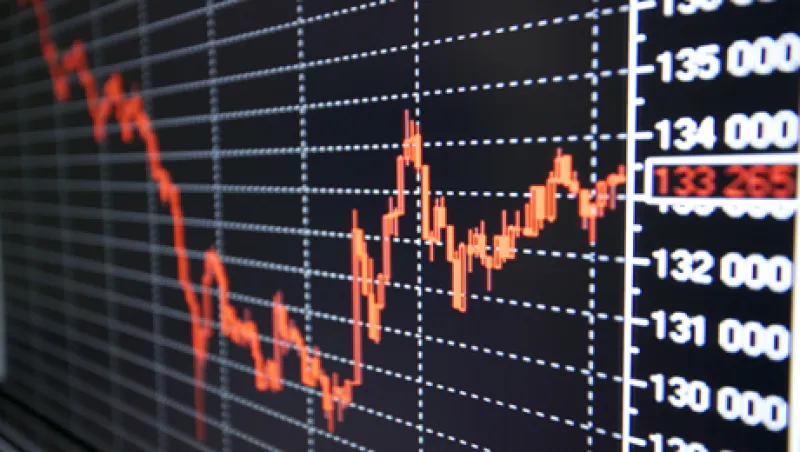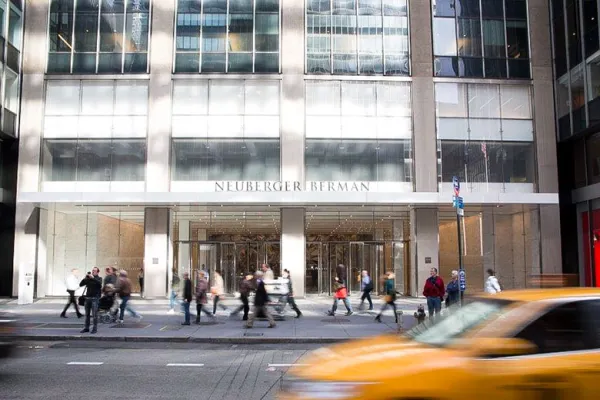The popularity of exchange-traded funds (ETFs) continued to soar over the last year, despite the fact that most of them failed to make any money. The number of U.S.-listed equity ETFs grew 22 percent last year to 1,090, and the assets in the market swelled 4 percent to $930 billion, according to BlackRock. Yet only one third of those funds generated a positive return, according to a Bloomberg analysis.
Of course, that performance largely reflects the market itself. The Standard & Poor’s 500 slipped 0.04 percent to 1,257.60. In a year when few assets returned much of anything, one shouldn’t expect the typical passively managed ETF to do any better.
The vast majority of ETFs are passively managed funds that are pegged to indexes or comprise particular assets, such as gold. They trade on an exchange, like stocks do. They can be traded throughout the day, unlike mutual funds, which only can be traded at the end of the day.
Nearly half of the 50 best performing stocks of the year were in the health care sector — including Pharmasset, up nearly 500 percent, thanks to its acquisition by Gilead. Utilities stocks also did well in 2011, as investors looked for strong, stable dividend-yielding equities as an alternative to low-yielding credit.
The best performing ETFs followed those trends very closely. Merrill Lynch’s Biotech Holders Trust (up 18.4 percent) was the best performing equity index of the year, according to Bloomberg. It was followed by the iShares Dow Jones U.S. Pharmaceuticals Index (up 16.3 percent), the Powershares Dynamic Pharmaceuticals Portfolio (up 15.8 percent), the Utilities Select Sector SPDR fund (up 15.4 percent), and the Vanguard Utilities ETF (up 14.9 percent). And the bottom performers reflected losing market sectors, such as clean energy; emerging markets; and uranium, which fell sharply in price after the Fukushima nuclear disaster. The Powershares WilderHill Clean Energy was the single worst performing equity ETF in the U.S., down 45.9 percent.
What accounts for the growing popularity of the ETF market? On the whole, ETFs are cheaper than mutual funds; and their performance was at least as good, if not better. About two thirds of mutual funds lost money, a Bloomberg analysis shows. And the ranking — which excluded index funds — found that the top-performing actively managed equity fund, the Sequoia Fund, returned just 12.1 percent. That is just two thirds of the gain posted by the top-performing equity ETF, the Merrill biotech fund. The average actively managed fund lost 2.4 percent in 2011, when the broader market was essentially flat.
Mutual funds tend to have much higher fees than ETFs. The fee ratio for traditional open-ended mutual funds is more than 1 percent of assets under management. No-load mutual funds sold directly by the sponsor — which don’t charge a commission or sales charge — often have a fee ratio in the 2 percent range. The American Century Emerging Markets Fund has a fee ratio as high as 2.82 percent. Large ETFs have a fee ratio of less than 1 percent — often as low as 0.2 percent. VTI’s Total Stock Market ETF charges as little as 7 basis points. Even the most expensive ETF, the Active Bear Fund, has an expense ratio of 1.85.
“Most mutual funds are run by managers trying to pick winning stocks. We know from empirical research that after fees charged, most give no value to investors,” says Wharton finance professor Jeremy Siegel, an adviser to ETF sponsor Wisdom Tree. “Timing the market is very difficult. Some can do it. But finding stocks that can outperform the market is hard,” Siegel says.
But beyond performance, the main issue for investors is one of utility — given the breadth of choice in the U.S. equity index market — and thousands of additional choices in other asset classes and global markets — how easy is it for an investor to navigate that maze? Do investors benefit from a fast, low-cost way to access a market without the guidance of an expensive fund manger, or do they boost the risks associated with impulse shopping?
The market has grown quickly, and there are hundreds of ETFs that aren’t returning any value to investors at all, according to Mark Zurack, a professor of finance and economics at Columbia University Business School and a retired partner at Goldman Sachs, where he started the equity derivatives research group. “There are 1,000 ETFs, and most investors probably can accomplish their goals with ten. What do you do with the other 990?” he says. “In some cases, ETFs may not be adding value, but the basic concept has enormous value. It doesn’t mean there isn’t some fire, but you have to dig into the details,” he told Institutional Investor in November.
For many proponents, the main advantage of ETFs is their flexibility, which allows investors to enter or exit an entire market with a single trade any time they want. “ETFs have proven to be a very efficient way to access a market,” says Jim Ross, senior managing director at State Street, the second largest ETF sponsor after BlackRock.
For some investors, however, that freedom and flexibility is reason for caution.
“When I look at the worst-performing ETFs, they tend to mirror every bad trend in the market,” Lewis Altfest, CEO and chief investment officer at Altfest Personal Wealth Management. He argues that many investors are prone to sell when emotions are high and momentum is running against them. That is why he is cautious when it comes to the use of ETFs, and warns that mutual fund’s inflexibility can be a valuable brake on impulse buying and selling. “Many investors tend to sell at the wrong time,” says Altfest, an associate professor of finance at Pace University.
Nonetheless, Altfest does use ETFs. He tends to favor larger funds with lower fees, noting that the difference between a 0.7 percent expense ratio and a 0.2 percent expense ratio might seem small, but that it adds up quickly.
He is a cautious consumer, though. A veteran investor, he has witnessed market trends come and go. ETFs are now fodder for cocktail party conversation, much as CDs were back in the ‘80s. That makes him nervous. He takes it as a sign that too many investors are piling money into something that they don’t understand.
As Zurack notes, ETFs are fast, flexible and cheap vehicles for expressing market sentiment. And for many investors, that can be a dangerous thing, especially in a market where the great majority of funds didn’t make any money at all.






